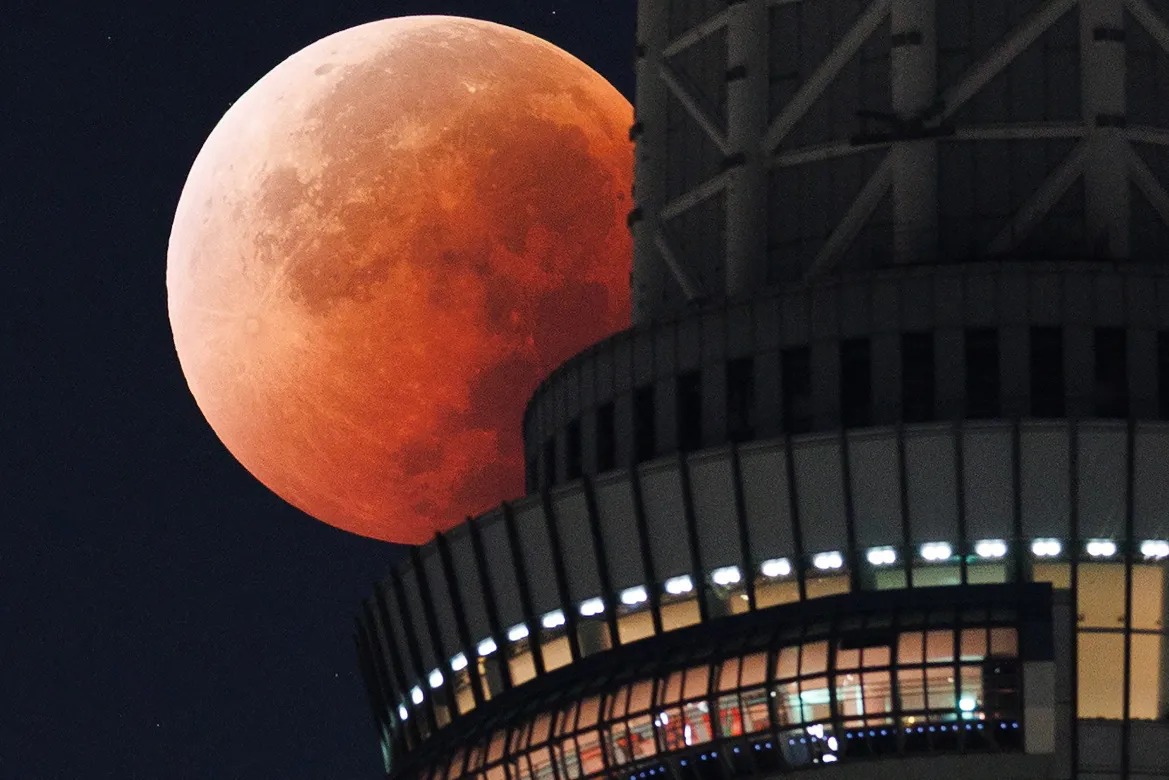
‘Blood moon’ from around the world: Why did the moon turn ‘red’?
Stargazers enjoyed a “blood moon” during a total lunar eclipse visible across Asia, as well as swaths of Europe and Africa, Al Jazeera writes.
When the sun, Earth, and the moon line up, the shadow cast by the planet on its satellite makes it appear an eerie, deep red colour — an effect that has astounded humans for millennia.
People in Asia, including India and China, were best placed to see Sunday’s total eclipse, which was also visible on the eastern edge of Africa as well as in western Australia.
The total lunar eclipse lasted from 17:30 GMT to 18:52 GMT.
The moon appears red during lunar eclipses because the only sunlight reaching it is “reflected and scattered through the Earth’s atmosphere”, said Ryan Milligan, an astrophysicist at Queen’s University Belfast, Northern Ireland.
Blue wavelengths of light are shorter than red ones, so they are more easily dispersed as they travel through Earth’s atmosphere, he told the AFP news agency.
“That’s what gives the moon its red, bloody colour.”









